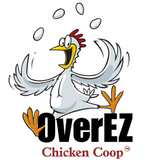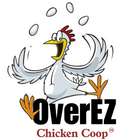Are you considering adding a flock of chickens to your backyard? If so, one essential consideration is providing them with a safe and secure outdoor space to roam—enter the chicken run. Chicken runs come in various sizes and materials, each with its own benefits and considerations. In this guide, we'll explore the optimal size for chicken runs and compare wooden and metal options to help you make an informed decision for your feathered friends.
Why Do You Need a Chicken Run?
Before diving into sizes and materials, let's address the why. Chicken runs serve multiple purposes, making them indispensable for many poultry keepers.
1. Space Constraints: Not everyone has the luxury of vast open spaces for free-ranging chickens. A chicken run provides a confined outdoor area where your flock can stretch their wings and engage in natural behaviors like scratching and pecking.
2. Predator Protection: Predators pose a constant threat to backyard chickens, from foxes and raccoons to neighborhood cats. A secure chicken run offers a barrier against these potential threats, keeping your feathered friends safe.
3. Neighborly Relations: While you might adore your chickens, your neighbors might not appreciate them wandering into their meticulously manicured flower beds. A chicken run helps contain your flock within your property boundaries, maintaining harmony with your neighbors.
Determining the Ideal Chicken Run Size
When it comes to chicken runs, size matters. While the exact space requirements can vary based on factors such as breed and individual needs, a general rule of thumb is to provide each chicken with 5 to 8 square feet of space. However, more space is always better, as it allows for greater freedom of movement and reduces the risk of stress or aggression within the flock.
Consider the following factors when determining the size of your chicken run:
1. Breed: Larger breeds like Orpingtons will appreciate more space to roam compared to smaller breeds like bantams.
2. Activity Level: Are your chickens active foragers, or do they prefer lounging in the coop? More active birds will benefit from a larger run to satisfy their natural instincts.
3. Number of Chickens: Calculate the total square footage based on the number of chickens in your flock, ensuring each bird has adequate space to thrive.
Remember, it's always better to err on the side of generosity when it comes to providing space for your chickens. A spacious run promotes happier, healthier birds.
Wooden vs. Metal Chicken Runs: Which is Better?
Now that you've determined the size of your chicken run, it's time to choose the material. Wooden and metal chicken runs each have their own set of pros and cons:
1. Metal Runs:
- Pros: Metal runs are typically more durable and require less upkeep compared to their wooden counterparts. They offer excellent protection against predators, especially if constructed from heavy-gauge wire.
- Cons: Metal runs may have larger holes, which could pose a risk for smaller predators like rats. Additionally, they may not blend as seamlessly into your backyard aesthetic.
2. Wooden Runs:
- Pros: Wooden runs often have a more pleasing aesthetic, blending harmoniously with your backyard environment. They typically feature smaller openings, offering better protection against predators like rats.
- Cons: Wooden runs may require more maintenance over time, including regular staining or sealing to protect against weathering and deterioration. They may also be more susceptible to damage from chewing pests like raccoons.
Ultimately, the choice between wooden and metal chicken runs depends on your priorities and preferences. Both options can provide a safe and comfortable outdoor space for your flock to enjoy.
In conclusion, selecting the right size and material for your chicken run is crucial for the well-being and safety of your feathered friends. By considering factors such as breed, activity level, and predator protection, you can create a secure outdoor environment where your chickens can thrive. Whether you opt for a spacious wooden run or a durable metal enclosure, your flock will thank you for providing them with a safe haven to explore and enjoy the great outdoors.

